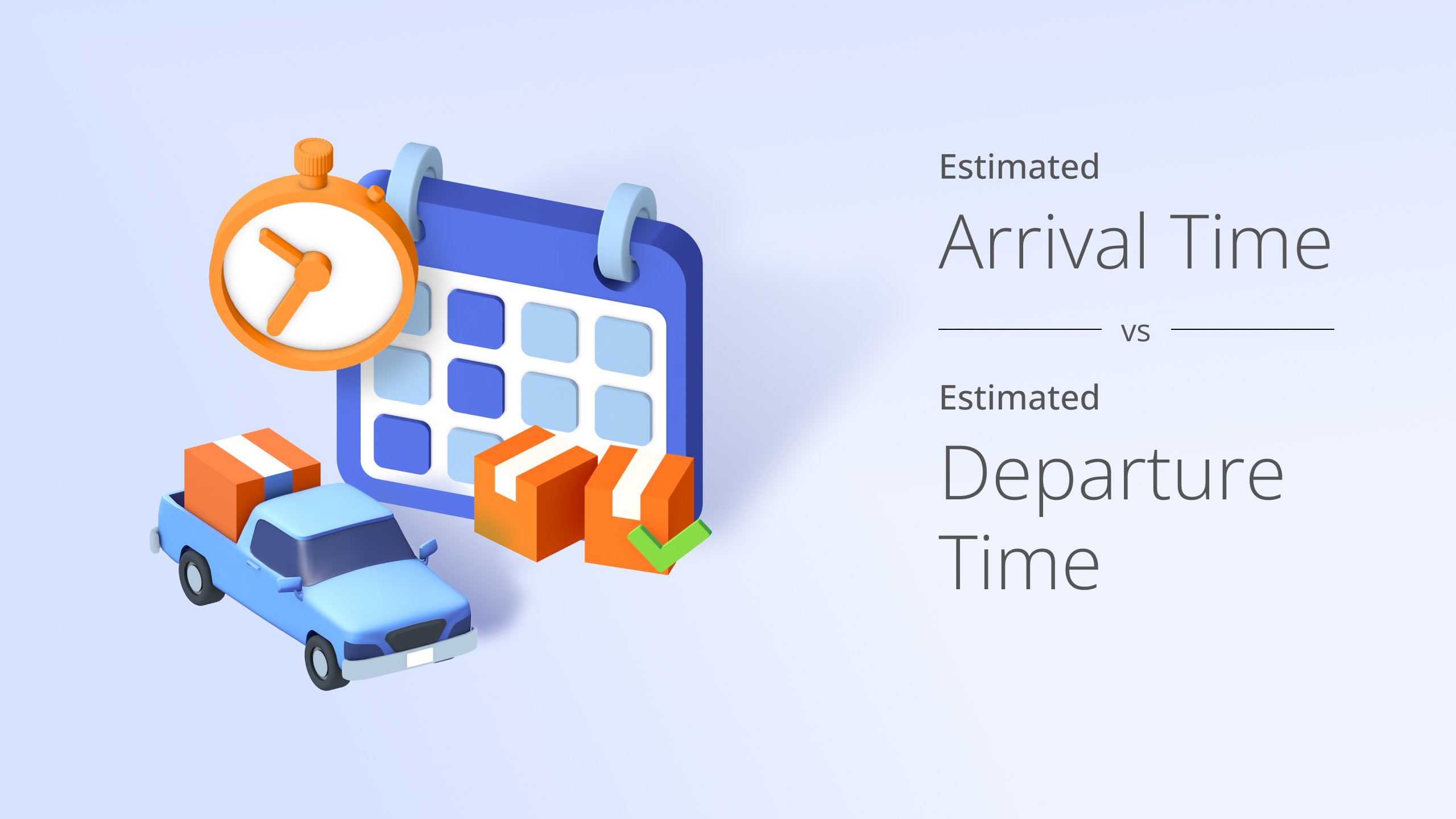Traditional inventory management can be a real headache.
With less demand, you’ll have stacks of goods piling up, taking up precious space and tying up your cash. And when the demand increases, you may struggle to keep enough products in the warehouse.
That’s where Just-in-time Delivery can help.
The idea is simple – get what you need when you need it, and not a moment sooner. No more dealing with excess inventory or scrambling to meet orders.
In this blog post, we’ll explore its pros and cons, how it works, and how to implement the right systems to offer Just-in-time delivery.
Table of Contents
What is Just-in-time Delivery?
Just-in-Time Delivery, often called JIT, is a strategy used in many supply chain management companies to receive and use materials or goods exactly when needed, neither too early nor too late.
The core principle is simple: to reduce waste and increase efficiency by getting the right amount of products at the right time.
Want To See For Yourself How Route4Me Can Help Plan Efficient Routes?

An Example of Just-in-time Delivery
Think of it like ordering your groceries for delivery.
In the world of grocery delivery, JIT is pretty slick. Instead of the store piling up massive amounts of fresh goods and hoping they sell, they keep things minimal. So, when you click ‘buy’ on that bundle of bananas, the store doesn’t already have a mountain of them in the back.
Instead, they put in an order with their suppliers for bananas just in time for your delivery. That way, you get those yellow goodies at the perfect ripeness, and the store doesn’t toss out heaps of overripe fruit.
It’s a win-win – you get what you want when you want it, and the store trims waste.
Does Just-in-time Delivery Make Sense for Every Business?
Here’s a list of businesses and industries that can benefit from Just-in-Time Delivery:
1. Restaurants: JIT delivery is a lifesaver for eateries. They can source fresh ingredients exactly when needed, ensuring food quality is consistently high while minimizing waste. This results in cost savings and happier customers.
2. Online Retailers: E-commerce businesses find JIT particularly useful in managing inventory. Instead of storing large quantities of products, they can order goods from suppliers as customer orders come in. This minimizes warehousing expenses and ensures customers receive the latest products immediately.
3. Car Manufacturers: JIT principles revolutionized the automotive industry. Car manufacturers receive components and parts just in time for assembly, reducing the need for extensive storage space. This translates into cost savings, improved production efficiency, and faster time-to-market for vehicles.
4. Tech Companies: JIT delivery services allows tech companies to maintain a minimal inventory of stocks of electronic components and devices, reducing carrying costs and enabling them to adapt swiftly to market changes.
5. Agricultural Businesses: For farmers and growers, JIT delivery ensures that crops are harvested and delivered when they are at their freshest. This minimizes waste and ensures produce is of the highest quality when it reaches consumers, benefiting farmers and end-users.
6. Fashion Brands: JIT delivery enables fashion brands to align their production with customer demand, reducing the risk of overstocking or ending up with outdated inventory. This approach decreases storage costs and keeps fashion brands agile and responsive to market trends.
7. Pharmaceutical Companies: The pharmaceutical industry depends on JIT to maintain the quality and efficacy of medicines. Minimizing storage time and reducing excess stock allows pharmaceutical companies to operate efficiently while preserving product integrity.
8. Airlines: JIT delivery is crucial for airlines to manage their onboard catering. They minimize waste and cut costs by stocking food and beverage supplies based on passenger demand and flight schedules. This leads to a more efficient and profitable operation.
Long story short, many businesses can benefit from just-in-time delivery by reducing inventory carrying costs, reducing waste, and enhancing the efficiency of their supply chain and production processes.
Advantages and Disadvantages of Just-in-time Delivery
1. Reduced Inventory Costs: JIT minimizes the need for extensive inventory stockpiles, cutting storage and carrying costs.
2. Lower Wastage: Since items are delivered precisely when needed, there’s less risk of product waste.
3. Improved Cash Flow: Reduced inventory means less capital in stock, freeing up cash for other investments.
4. Enhanced Efficiency: JIT streamlines operations and processes by focusing on demand-driven production, improving overall efficiency.
5. Space Savings: Smaller inventories require less warehouse space, which you can use for other purposes or even rent out.
6. Faster Response to Market Changes: JIT enables quicker adaptation to shifting customer demands or market trends.
7. Quality Control: Smaller inventories make it easier to detect defects, enabling better quality control.
8. Lower Lead Times: Shorter lead times in just-in-time delivery speed up the order-to-delivery cycle.
9. Reduced Lead Time Variability: Consistent delivery times minimize production disruptions and uncertainties.
10. Better Supplier Relationships: JIT fosters stronger, long-term partnerships with reliable suppliers.
10 Disadvantages of Just-in-time Delivery
As mentioned before, JIT comes with challenges too. Here they are.
1. Supply Chain Vulnerability: Just-in-time delivery relies heavily on a dependable supply chain. Any disruptions in supplier deliveries can disrupt production.
2. Risk of Stockouts: Without safety stock, stockouts can occur if suppliers fail to meet delivery schedules.
3. High Transportation Costs: Frequent small shipments may increase transportation costs compared to bulk deliveries.
4. Supplier Dependence: Just-in-time delivery requires you to tie up with suppliers, making it challenging to switch suppliers when needed.
5. Significant IT Investment: Requires sophisticated IT systems to monitor and manage inventory and orders.
6. Production Constraints: Restricts a company’s ability to respond to sudden increases in demand.
7. Training Requirements: Workers may need training to adapt to just-in-time practices, which can be time-consuming and costly.
8. Fluctuating Demand Challenges: JIT may struggle to adapt to highly variable or unpredictable customer demand.
9. Quality Control Burden: Continuous, consistent quality control is essential, which may burden the production process.
10. Environmental Impact: Frequent just-in-time deliveries can increase carbon emissions and environmental impact.
How Route4Me Can Help with Just-in-time Delivery
Route4Me route planner has several powerful features that can help you optimize and improve the efficiency of your just-in-delivery operations. Here’s how it can benefit.
Optimize Routes
Route4Me’s last mile app helps plan well-optimized routes for delivery drivers, minimizing travel time and fuel costs. The software considers traffic congestion, weather, roadblocks, and more to ensure your drivers can deliver on time.
Multi-Stop Route Planner App

Track Vehicles
Route4Me’s best delivery route planner app offers GPS tracking to help track delivery vehicles in real-time. It enables you to monitor progress and make necessary adjustments to maintain delivery schedules.
Dynamic Re-Routing
In case of unexpected disruptions or delays, Route4Me’s delivery route optimization software can quickly re-optimize routes to adapt to changing conditions, helping to maintain the JIT schedule.
Customer Notifications
Route4Me’s route optimization solution offers a customer alerting and notification feature that helps send automatic notifications to customers, informing them about delivery ETAs and any potential delays.
Electronic Proof of Delivery
Route4Me’s delivery planning app offers features like electronic signature capture and photo capture for proof of delivery, ensuring transparency and accountability in the just-in-time delivery process.
Reporting and Analytics
Route4Me’s logistics route planning software offers reporting and analytics that help you track all the crucial data you need to make your just-in-time delivery operations efficient.
For example, you can track fuel expenses, total stops completed, average stops completed, and more.
Scalable
Route4Me’s highly rated route app is scalable, making it suitable for businesses of all sizes, whether managing a small fleet or an extensive network of delivery vehicles.
Frequently Asked Questions(FAQs) about Just-in-time Delivery
What is an example of just-in-time ordering?
What is an example of a just-in-time delivery system?
Final Thoughts about Just-in-time Delivery
In conclusion, just-in-time delivery is all about efficiency and precision. By carefully forecasting demand, collaborating closely with suppliers, and optimizing your processes, you can streamline your operations and minimize waste.
With the right tools and strategies, such as Route4Me for route optimization, you’ll be well-equipped to meet customer demands quickly and keep your inventory lean.
Remember, just-in-time delivery isn’t just a strategy – it’s a philosophy that values timely, cost-effective deliveries and continuous improvement. So, take the leap and explore how JIT can revolutionize your delivery process.
Want To See For Yourself How Route4Me Can Help Plan Efficient Routes?














